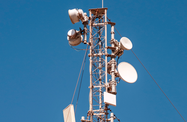The roll-out of fourth-generation long-term evolution (4G LTE) networks across Kuwait is expected to offer a boost to the mobile market. While the average revenue per user (ARPU) remains among the highest in the region, it has nonetheless been falling in recent years.
Zain, the largest operator as measured by market share, has joined forces with Chinese giant Huawei to expand and enhance its 4G LTE network, while Wataniya moves to achieve nationwide coverage for its network, and VIVA continues with its 4G LTE expansion strategy, backed by new financing that will help with infrastructure and deployment expenses.
Although costly infrastructure is often cited as a stumbling block in 4G LTE development, Kuwait’s smaller geographic area and well-established telecommunications industry will allow operators to avoid some of these hurdles in the development of affordable 4G LTE services.
Strong market potential
Kuwait has in some respects been viewed as a telecommunications innovator in the Gulf and was the first GCC country to license a second mobile operator, Wataniya, in 1999. Today Zain and Wataniya have a presence across a host of countries in the Middle East and Africa, although both are under increased pressure domestically following the entrance of VIVA in 2008. The rise in competition has squeezed profit margins, but statistics suggest Kuwait remains an attractive market.
According to the World Cellular Information Service, mobile subscriptions in Kuwait are expected to increase at a compound annual growth rate of 7% over the next five years, supported by population and GDP growth, as well as a rise in data usage. Although Kuwait’s ARPU fell below $30 for the first time in 2013, according to Informa Telecoms and Media, it remains the second-highest in the region behind Qatar.
Mobile penetration reached 176% at the end of 2011, according to Business Monitor International, which predicted penetration will hit 190% by 2016, owing in large part to the common consumer practice of holding more than one SIM card.
Telcos in Kuwait also benefit from a relatively under-developed fixed-line broadband market, which means consumers often choose to forgo a fixed connection in favour of a mobile option. According to Informa Telecoms and Media research, household broadband penetration stands at 45%.
4G LTE opportunities
While Kuwait lags in the fixed broadband market, it offers relatively advanced mobile data services. In October 2012 the Ministry of Communications granted formal approval for telecoms companies to roll out 4G LTE networks. Zain launched its network in November 2012, followed by VIVA this past March. Wataniya, meanwhile, has taken a slightly more circumspect approach, offering 4G LTE service in selected areas as of July 2013, with plans to expand its network across the country by 2014.
Consumers have eagerly embraced faster, smoother mobile internet services on smart phones and tablets. Zain reported that 10% of its customers in Kuwait had migrated to 4G LTE as of November, while company-wide the telco saw its data revenues rise by 22% for the first three quarters of 2013. Data now accounts for 28% of the firm’s revenues in Kuwait.
Zain recently announced plans to launch a commercial LTE-Advanced (LTE-A) network in Kuwait in 2014, which will eventually deliver speeds of up to 300 Mbps, double what is possible on existing LTE networks.
Meanwhile, VIVA obtained $270m in financing from the National Bank of Kuwait Group in June 2013, to expand its 4G LTE network and upgrade services. The telco also added five new store outlets to its network in late 2013, in an effort to reach more customers.
Building 4G LTE networks is often costly – Wataniya, for example, spent $350m to upgrade to an LTE network. But with a total land area of just 17,820 km, and a well-established telecoms sector that was one of the first to launch 4G LTE technologies in the Gulf, Kuwait is better-positioned to embrace the latest mobile innovations than larger nations with less-developed infrastructure.
Also helping growth is the competitive pricing of 4G LTE data plans. Zain offers a 30GB 4G LTE plan for KD16 ($56.70) per month, and 80GB for KD24 ($85.04), or $1.89 and $1.06 per GB, respectively, substantially lower than the global average of $4.86 per GB, according to research firm GSMA Intelligence.
The affordability and availability of these new technologies, coupled with a push among all three companies to expand 4G LTE offerings, should ensure a rise in the number of data customers, although the pricing may mean growth in profits will be modest.
Follow Oxford Business Group on Facebook, Google+ and Twitter for all the latest Economic News Updates. Or register to receive updates via email.

